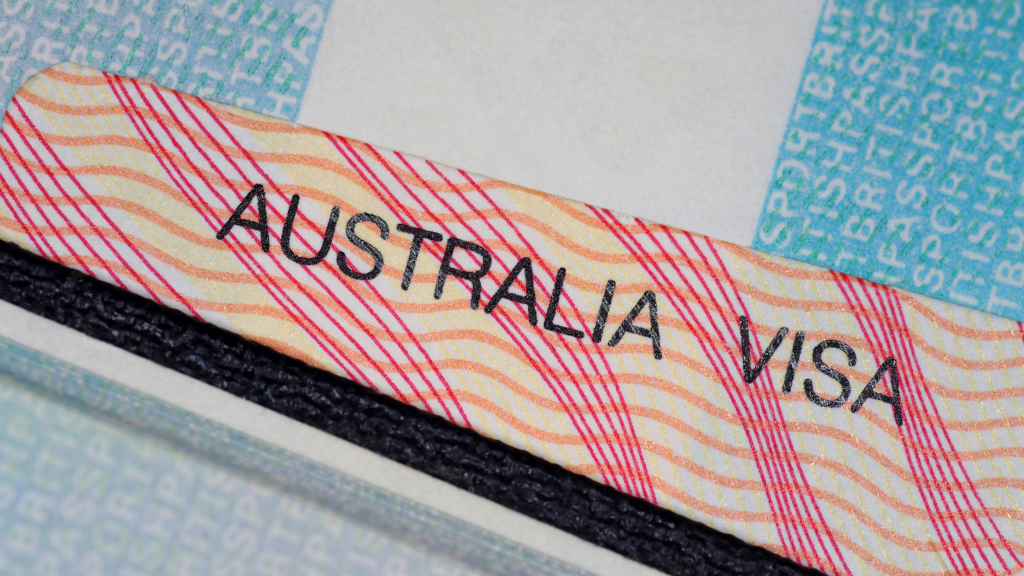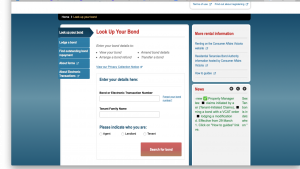Robyn Vogels, Founder of Personnel Relocations, speaks exclusively to Charlene Tan, founder of Wayfinder Migration, on Australian visa updates amidst the pandemic.
The following is an excerpt of the interview. You may find the full version below.
Prioritised Visas
The borders are starting to open now. Is there more of an emphasis on some visas and some jobs? Give us just a bit of an overview of what’s happening in the immigration world at this time.
The good news right now is that the borders are looking to be open for Australians and permanent residents to come in November. And while that is just limited to Australians as well as permanent residents, I’ve taken it as an indication that we are moving forward in the right direction, which means that foreseeably more restrictions will lift.
The international student arrival travel plan will start to roll out and we’ll start to see more of the international inbound travel. It is also looking good to be open to occupations that are on the priority skill list.
With the restrictions still in place, some of the occupations that are on the priority skill list include nurses, medical professionals, medical practitioners, pharmacists, chefs and cooks. So those are some occupations that will allow people to come into Australia in the shorter term if you have an employer who is sponsoring you. So that’s in the short term.
How To Start Visa Application
What is the starting point for people? Where do they start with that visa process? Where do they go?
So what I’ll say is if you’re looking to obtain permanent residency, there are a couple of visas that require a nomination from either Australia or the state or territory.
That’s the point tester one. One way to look for that is okay is you have your occupation, you’ve been working X amount of years in the occupation, go to the Medium and Long-term Strategic Skills List (MLTSSL) and see if your occupation is in there. If your occupation is in there, quickly do a calculation of your points to see if you get at least 65 points to be eligible for the general skilled migration program.
That’s one way of doing that. That’s also a good basis for searching for your occupation. How the department list works is if you can find your occupation, a drop-down list appears of all of the relevant visa programs.
Another way you wanna look for there is an employer-nominated program. So, if you have an occupation, the employers can sponsor you and bring you over or if you’re already in Australia, just sponsor you and continue your stay here.
Which pathways are popular for obtaining permanent residency and the processing times?
Right now, I’ll say my general advice is if you are not yet in the metropolitan cities or even if you are in Melbourne and New South Wales, I’ve generally been asking everyone to just expand their mind and think about moving into regional Victoria. Simply because then you will have less competition for the 491s.
And even though 491 is not a straight-up PR–the 491 is a provisional visa first for up to five years–after you’ve been granted that visa, live and work in the area for three years and then you’ll be able to apply for permanent residency.
That’s the difference with the 491. If you’re eligible for the 491 and you’re able to put in an expression of interest, the 491 invites are less competitive. So in terms of getting a high number of points, it’s not that important and the government and the various states have been handing out 491 invites a lot quicker.
Startup and Business Visas
What are the options available for startup visas and business visas?
For startup businesses at the moment, the Australian government has rolled out a new program that is targeted. It includes entrepreneurs and startup businesses, particularly. I found that South Australia has a quite welcoming program for that. So, where you would want to start is to do a quick search on life in South Australia. Google South Australia or live in South Australia or business in South Australia and you’ll be able to see a couple of the business visa programs.
I can’t talk too much about that in detail because it’s a new program. So, have a look at that just to get a sense of whether your startup business is eligible at least at face value and then you’ll be able to do a little bit more research on that one. That’s where the businesses are.
But in general, for the business visas, Australia is looking for businesses that have been running for at least four years and after four years. Two of those years should have a turnover of between AUD500,000 and AUD800,000. Again, depending on the state that you’re in.
Is that also part of the investment visa?
It is. It falls in the same program. The business investment.
They have just started opening up and the thing though is South Australia is already open. And I feel like right now South Australia has been aggressive with business visas. With the business visa applicants specifically. So if you’ve been running your business for at least four years and in the last two years you’ve had a turnover of between AUD500,000 and AUD800,000, that’s the first state that I will look at right now because they have their arms wide open.
Investment Visas
[Viewer]: If we apply for a 188 visa business innovation and investment visa, do we have to open a business with the same occupation as the visa is approved for?
For the 188 visas right, you will have to deliver on the agreement that went into that particular state and most of the time it would mean running a particular business in that state. Does it have to be, I think the question is, does it have to be the same business that you are running in your home country? No, it doesn’t. Generally, it doesn’t.
You’re in the context of that business. Therefore, if there’s any limitation it would be within a business owner contract rather than in occupation.
Nurses and 491 Visas
[Viewer]: What pathways are there for enrolled nurses? Which regional areas are best for getting a 491 sooner?
So for enrolled nurses, I would say in general you want to look into regional Australia: South Australia, Tasmania, Queensland and Perth although we’re still waiting for the details for that one.
I think generally right now if you’re young enough and you have the time, what Tassie has that’s good is you can study for two years then gain access to the graduate requirements, which will then kind of speed up your timing and selection in Tassie. That’s the other pathway that’s available if you’re young enough and you have time.
So, when you say it speeds up, do you mean it speeds up a pathway to PR?
Correct. It speeds up the pathway to PR because you would have met residents requirements and you would have met being a graduate of Tassie.
Are Teachers on the Skills List?
[VIEWER]: My daughter is 26. She’s a high school English teacher. She has a degree in psychology. Are these on the critical skills list especially in WA? And how long will it take for a visa to be proof if it’s on the skills list?
I’ll cut it up a little bit. A high school teacher was on the skills list for Western Australia. It’s been closed recently. But teachers, I find this is generally an occupation that has been in demand. It’s much like nurses. There’s secondary school teachers, early childhood, primary school, and so on and so forth.
My advice to the high school teacher portion, if that has been something that your daughter has been working on more recently, consider doing the skills assessment first or preparing for skills assessment because I’m confident that even if a secondary school teacher doesn’t reopen in Perth, there will be other opportunities in other parts of Australia.
So you said it’s been closed recently. Is that just because of COVID? Or is it closed permanently?
It’s just closed for a while. Generally, that’s what happens. At the start of the financial year, each state will advertise the skills they are looking for, this is the “skills occupation list”. Once they roll those lists out, the volume of people will start to respond and as soon as they’ve had enough interest, the State will close it. The next year, they do it again. Those will get adjusted and tend to reopen in the new financial year. So that’s July.
The other part of her question is, how long will it take for a visa to be approved if it is on the skills list?
It depends on the visa program that you’re applying for. Let’s assume that you are going for the points. That’s the skilled migration one. That will require pulling all your documents together and putting in an expression of interest.
Now, you put in an expression of interest, which means you alert Australia to say, “Hey, I’m putting my name and my skills in the hat for selection.”
There are three general skill programs: There’s your 189 that’s the independent one. That one is highly competitive. Invites are only going out to people who have 90 to 95 points and above. If you have anything lower than that, you’re going to be waiting a long time.
There’s the 190s. If you can get an expression of interest for the 190s, generally it’s a little bit less competitive. I feel like invites have gone out to people between 75 to 80 pointers.
For the 491s, it’s even lower. Invites have been going out to people 65 to 70 points.
So in terms of waiting time, 189…a long time. 190 anywhere between three and six months especially if you’re on shore. 491…quick. It can be anywhere between one month and three months.
Once you get the invitation, you put in your visa application and that is taking anywhere between… the earliest that I’ve had recently was four months. But the standard processing time right now that they’re seeing is anywhere between four and nine months.
Student Visas
I’ve been looking at the student visas a fair amount recently. I just wish more students could get proper information and get the right support. I think some of them try to do it the cheap and cheerful way and it breaks my heart when I see some of them.
It’s hard to know who to trust. It is. My advice to everyone watching is to do your research first. Get a sense of your options on your own. But at some point, get onto a paid consultation with a registered migration agent or a migration lawyer. This person will be obligated to tell you and advise you professionally. Know what you want to ask, do your homework and make the most of the time you invest with that person.
There are lots of free consultations. Do that as well as part of your research but eventually before you make your decisions, you get onto a final pay consultation just to be clear and get the details.
Make sure that you’ve done your homework properly. That few $100 might save you in the long run. Unfortunately, people don’t see the value in it and you know, business as well. You only know what you know and you only know the questions to ask. Spending that bit of money that person as you say is obligated to tell you these are the options.
Family and Partner Visas
There’s a lot of families that are disjointed and stuck around the world. What are you seeing? Are you seeing a lot of family visas or perhaps ex-pats, Australian ex-pats coming back? What is happening at the moment?
Let me start with what I’ve been seeing. I generally get questions about how people can bring their parents over at this time. I don’t have a lot of positive news for that one. The department has taken a very rigid and inflexible view when it comes to our parents probably because of the volume of families that want to be reconnected.
So right now, they’ve only been giving out travel exemptions to parents who are accompanying some grandparents. So, when you think about it, your parents are like grandparents, who are accompanying kids under sixteen to come back to be reunited with their parents. That’s one scenario that they are granting travel exemptions.
The other scenarios are that if the Australians or permanent residents over here are in a critical medical condition. So the parents and even in those cases what I’ve seen is that they are only granting one parent to come in.
I am bolstered by just the general vaccination rates that we have in Australia. So I feel like this will change soon, at least in the first quarter of next year. We’ll be able to see greater flexibility with parents. So let’s keep our fingers crossed for that one.
How are we doing on the partner visas?
Partner visas, offshore partner visas, are moving along. What we have seen is that the department has taken into consideration offshore partner visas that have been in the system for more for at least a year. If your application has been processing for at least a year that cohort of people has recently been receiving travel exemptions to come in.
So I’ll say keep an eye on that one.
Was that if your partner visa has been in the system for a year?
Yes. That’s starting to be processed now because I think they have gone enough volume of feedback that people have been separated at this time. They have to take into account that if they have still been in the process for over a year and they are still together, it is a significant relationship. So yes, that is happening.
You may reach out to Charlene at [email protected] or by visiting her website Wayfinder Migration.









2 Responses
Your post is really informative, and i like your post a lot. Thanks a lot for sharing such a useful information.
Thank you, Joe!